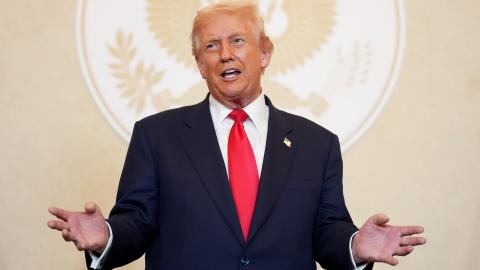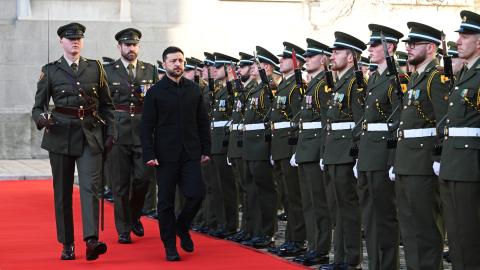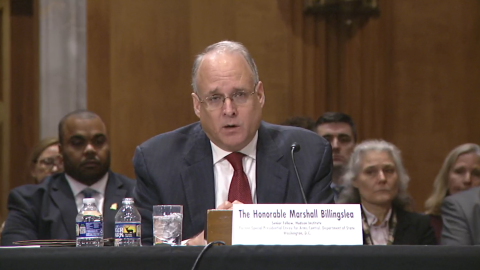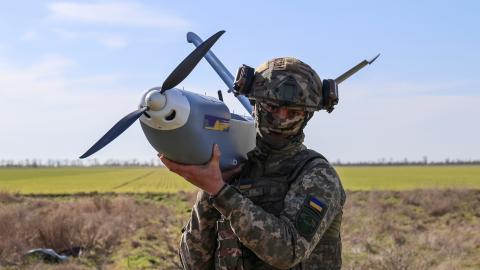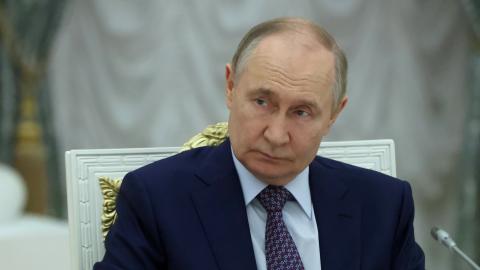During his first term in 2017, U.S. President Donald Trump took bold action that many had considered unthinkable at the time: He approved the delivery of Javelin anti-tank missiles to Ukraine, which was fighting a low-intensity war against Russian invaders and Russia-backed separatists, and Georgia, which was also under partial Russian occupation. Less than a year into his term, Trump thus did something that his predecessor, Barack Obama, had refused to do over the course of eight years. In the case of Ukraine, U.S. support shifted from non-lethal aid under Obama to actual weapons under Trump. The Javelins, sniper rifles, and rocket launchers delivered by Trump played an important role in repelling the Russian attack on Kyiv during the early days of the 2022 invasion.
At the time, many foreign-policy commentators struggled to reconcile these moves with Trump’s “America First” worldview. But the decision to arm Georgia and Ukraine in the shadow of Obama’s “reset” with Russian President Vladimir Putin—just like the killing of Iranian Gen. Qassem Suleimani in the shadow of Obama’s Iran deal—were arguably America First actions. They placed support for the United States’ own allies and partners before hopelessly naive engagement with the country’s adversaries.
In his second term, however, Trump has struggled to define what his America First foreign policy means in the context of Ukraine, to the extent that his critics have accused him of taking Russia’s side. That may have started to change this week during a joint appearance in the Oval Office with NATO Secretary-General Mark Rutte. It was announced that several billion dollars’ worth of U.S.-made weapons will be delivered in the coming weeks. While most details of the plan remain undisclosed, officials confirmed that it will include several Patriot anti-missile batteries. Additional weapons systems, including long-range strike capabilities, are also reported to be under consideration. Furthermore, these new weapons will be entirely paid for by European countries and delivered to them to give to Ukraine. This allows Trump to walk a political tightrope with his base, many of whom are skeptical about more aid to Ukraine.
At the same time, Trump gave Putin 50 days to come to the negotiating table in good faith. If he fails to do so, Trump says he will consider dramatically escalating sanctions and tariffs against Russia and the countries buying its oil. Already, Russian officials are mocking Trump’s deadline because he has made similar ultimatums in the past, only for nothing to happen when the target date passed. Also, 50 days is a long time in Ukraine. Assuming that Russia maintains it current firing rate of several hundred drones and missiles per night, 50 more days could easily mean 15,000-20,000 more drone attacks over the period.
There is no question about Trump’s sincerity in wanting to bring the war to an end. The problem is not his intention, but the lack of a coherent, realistic policy path to achieve that goal. Some of the blame lies with his team—particularly at the Department of Defense.
The most troubling example came earlier this month, when the Pentagon abruptly halted weapons deliveries to Ukraine, including shipments that were already staged in Poland. The decision blindsided not just Ukraine and the Europeans, but many people in Washington—including, perhaps, Trump himself. When questioned about it, he appeared unaware of the decision.
The Pentagon’s poorly guided decision to halt arms transfers came at a terrible time for both Ukraine and Trump. For Ukraine, many of the delayed weapons were desperately needed air defense equipment—at a time when Russia was launching nighttime barrages of hundreds of missiles and drones at Ukrainian cities. For Trump, the sudden weapons freeze undermined a rare moment of geopolitical momentum after a successful NATO summit, a decisive U.S. strike on Iran’s nuclear facilities, and a U.S.-brokered cease-fire in the Iran-Israel war.
Together, these moves could have created an opening for Trump to force the Kremlin to the negotiating table. Instead, the Pentagon’s sudden pause of arms shipments sent the opposite signal—of U.S. flip-flopping and internal disagreement—thereby weakening Trump’s hand at a critical moment. This is why Trump’s announcement in the Oval Office this week was so crucial. Not only did it send the right signals to Kyiv, Brussels, and Moscow, but senior officials in the Defense Department are now on notice to get behind the new policy of pressuring the Kremlin.
On the campaign trail, Trump made ending Russia’s invasion of Ukraine the cornerstone of his foreign policy. And without question, it has proved to be the most complex and demanding task set before him. There is a feeling that Trump has lost control of the diplomatic process he sought to implement and that Putin is now setting the terms. This week’s White House announcement is a good first step in regaining control.
In addition to this week’s military aid announcement, there are other concrete steps he can take right now to put things back on track.
The first—and most important—step is recognizing that a just and fair peace is in Trump’s own best interest. Any outcome that suggests Russia “won” in Ukraine would severely damage his credibility as a statesman abroad and his popularity at home; the vast majority of Americans, including Republicans, do not trust Putin. If Moscow is seen as emerging with gains, Trump’s critics at home and abroad will rightly question the strength and strategy behind his foreign policy.
